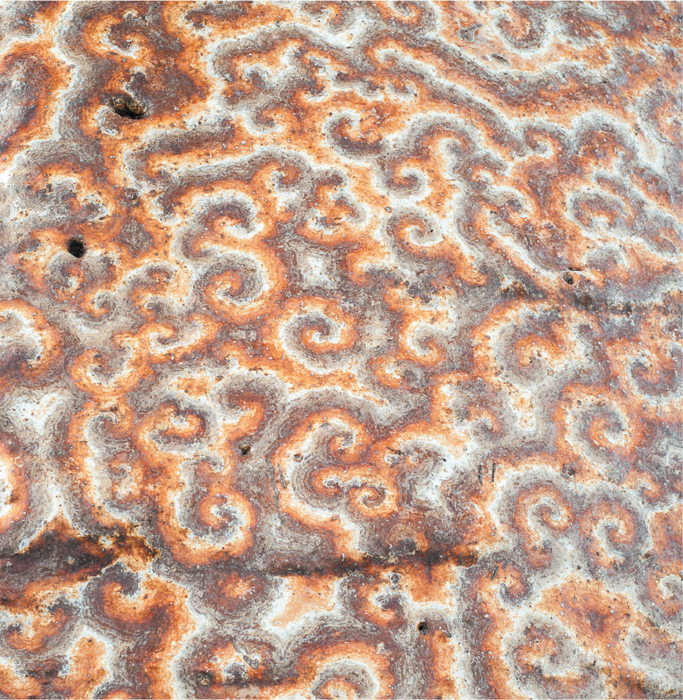
On the Mahafaly Plateau in southwestern Madagascar, gold-coloured Adansonia rubrostipa grow alongside white Pachypodium geayi, which are sometimes mistakenly referred to as baobabs. (V.V.)

On the Mahafaly Plateau in southwestern Madagascar, gold-coloured Adansonia rubrostipa grow alongside white Pachypodium geayi, which are sometimes mistakenly referred to as baobabs. (V.V.)
In Madagascar, baobabs are often confused with other succulent, bottle-shaped trees such as Moringa drouhardii, Delonix floribunda and Pachypodium geayi. Although superficially similar, these species are not closely related to baobabs. They have come to resemble each other through a process called convergent evolution, whereby unrelated species living in similar conditions develop the same adaptations and appearance. In southern and western Madagascar, the climate is hot and dry, and the rainy season is short and often unpredictable. Succulent, swollen stems and branches, pale, peeling bark and deciduous leaves are all adaptations to a harsh, unforgiving climate.
On the following pages, we will present the species most commonly confused with baobabs, and help you to identify them.

With their swollen trunks and silver-grey bark, Delonix floribunda (left) and Adansonia za (right) can look very similar, but are in fact unrelated. These two tree species occur in the hot, dry climate of southern Madagascar's spiny forests, and have developed similar characteristics through convergent evolution. (L.J.)

Papery, peeling bark is a distinctive feature of many Delonix species. (L.J.)

D. floribunda growing on the limestone plateau at Tsimanampesotse National Park. (L.J.)
Inset left D. decaryi flowers. (L.J.)
Inset right The fruits of all Delonix species are long, flat, woody pods. (L.J.)
Common name Flame Tree (English), Flamboyant (French), Malamasafoy, Fengoky (Malagasy)
Description There are nine species of Delonix in Madagascar, all of which are endemic. Most species have swollen, cigar- or bottle-shaped trunks, and several have reddish-brown to grey bark that peels off in sheets. However, they rarely grow to the same massive height and girth as Adansonia. Like baobabs, Delonix have large, showy flowers, but they are smaller and differ greatly in structure. The leaves are composite, bipinnate with many small leaflets, and Delonix fruits are long, narrow, woody pods.

The bark is generally smooth and shiny, though it may become creased or pitted in mature trees. (L.J.)

Givotia madagascariensis trunks are often contorted or crooked, with creases in the bark appearing at bends. (L.J.)

The flowers of G. madagascariensis are small and easily overlooked. (L.J.)
Common name Farafatsy, Farafatse (Malagasy)
Description Givotia madagascariensis is characterized by a swollen, cylindrical trunk with smooth, grey bark. It grows in dry deciduous and spiny forest in western and southwestern Madagascar. Givotia wood is soft, light and strong, and is much sought after by Vezo fisherman for making a lakana, the traditional outrigger canoe. It is most likely to be confused with Adansonia za because of the similar coloration and shape. However, unlike Adansonia species, Givotia has simple, lobed leaves, and it has compound inflorescences with small, whitish-yellow flowers.

A ripe fruit of Moringa drouhardii. (L.J.)

M. drouhardii inflorescences are panicles made up of small yellow flowers. (L.J.)

M. drouhardii growing on limestone. Sarodrano, near Toliara. (A.P.)
Common name Flour-sack Tree (English), Maroserana (Malagasy)
Description Moringa drouhardii has distinctive grey-white bark and a swollen trunk, which may reach up to 2m in diameter. Its wood is water-rich and fibrous, closely resembling baobab wood. It has short, twisting branches that often form a dense, rounded crown. However, the leaves, flowers and fruit are all easily distinguishable from those of the baobabs. M. drouhardii has compound leaves, bipinnate with numerous small leaflets. The inflorescences contain many small, yellow flowers that attract clouds of insects, while the fruits are long, green pods containing whitish pyramid-shaped seeds 2–3cm long.

Pachypodium rosulatum var. gracilius. Isalo. (L.J.)

P. geayi has a bottle-shaped trunk with grey-white bark. Tsimanampesotse National Park. (L.J.)

Rows of worn spines spiral up the trunk of this mature P. geayi. Arboretum d'Antsokay, Toliara. (L.J.)
Inset Flowers of P. mikea. PK32-Ranobe. (L.J.)
Common name Elephant-foot Tree (English), Vontake (Malagasy)
Description The genus Pachypodium contains around 25 species, 20 of which are endemic to Madagascar. They are variable in form, from dwarf species a few centimetres high to cigar- or bottle-shaped trees up to 5m tall, with spiny trunks and/or branches. In contrast with Adansonia, the trunk and branches are usually spiny and the leaves of bottle-shaped species of Pachypodium are simple and elongated, growing from the stem in whorls. The widespread P. geayi and P. lameri have grey-white bark and white, windmill-shaped flowers. P. rosulatum var. gracilius, which grows on the Isalo Massif, is often incorrectly referred to as a dwarf baobab.

Intricate spiral patterns cover the trunk of this Adansonia grandidieri. The cause of these markings remains unknown, though some believe them to be the result of a fungus. Andavadoaka. (L.J.)

A giant A. grandidieri towers over a small Sakalava village. Near Morondava. (V.V.)

A collage of baobab trees, bark, leaves, flowers and fruit.Left to right, top row: A. rubrostipa flowers, A. suarezensis, A. suarezensis bark, A. rubrostipa fruit, A. grandidieri, A. grandidieri fruit. Second row: Atypical A. za fruit, A. rubrostipa seedling, A. grandidieri stamens, A. madagascariensis leaves, A. madagascariensis stigma, A. madagascariensis flower. Third row: A. madagascariensis flower, hollow A. grandidieri, A. digitata flower, A. rubrostipa flower, A. grandidieri, A. rubrostipa and Standing's Day Gecko. Fourth row: A. suarezensis, A. grandidieri bark, typical A. za fruit, A. madagascariensis flower bud, A. rubrostipa fruit, and A. grandidieri flower. (L.J. and A.P.)

A stunted A. rubrostipa under the wheeling stars at Tsimanampesotse National Park. (L.J.)

The Four-windowed Baobab (A. grandidieri) is completely hollow, its cool interior giving shelter to travellers on hot days. Belitsake, near Morombe. (L.J.)